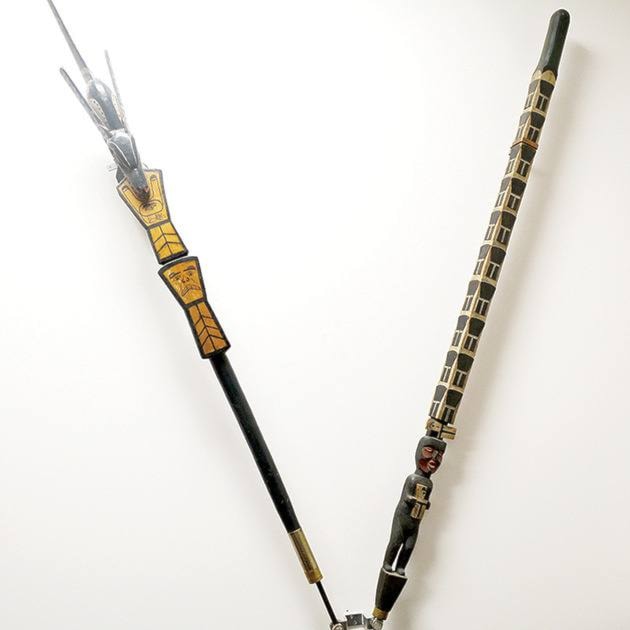Another mystery has popped up at city hall, this time in the council chambers.
With the matter of who did the stone work on the cenotaph in front of the building still unknown, attention has now turned to two items hanging on the wall of the chambers next to the Canadian and B.C. flags.
Perhaps not readily noticed by many, the two talking sticks have been in the possession of the city for more than 50 years.
Within the aboriginal community the talking sticks, when held, are a symbol of authority that the person holding them has the right to speak to an issue being discussed.
Questions about the talking sticks were raised by city councillor Michael Prevost at the Nov. 14 council meeting when he suggested they discuss at the next council meeting whether they should return them to their place of origin.
The repatriation of aboriginal art and other artifacts is an important part of the growing effort toward reconciliation and recognition of the aboriginal community within Canada.
In this circumstance, the two talking sticks appear to have been a gift to the City of Terrace at the time of the opening of the current city hall in the summer of 1964.
A plaque dated Aug. 1, 1964 that’s been sitting in the mayor’s office indicates that the items were donated “to the District of Terrace by Skeena Forest Products Ltd. Pohle Lumber Co. Ltd.”
But it’s not known how the sticks were obtained or who obtained them, though information on the plaque does explain where they are believed to be from.
“These sticks originate from either Kingcome Inlet or Gilford Island-Southern Kwakiutl Tribe,” reads the plaque
It goes on to explain: “Talking sticks were used in tribal councils by the ‘official speaker’ for a chief of a tribe to emphasize pertinent points in his speech, and generally denoted the clan and rank of the chief.”
One shows a “killer whale over two coppers (coppers represented wealth and thus financial position of the bearer)” and the other shows a “chief holding a ‘broken’ copper surmounted by a number of coppers.”
Although the plaque says which one is on the left and right, they are hung in council chambers the opposite way.
Longtime local resident Helene McRae, the wife of Bill McRae who was the general manager of Skeena Forest Products Ltd. at the time, believes the presentation is tied to the mayor and council being speakers for city affairs.
One of the partners along with McRae in Skeena Forest Products at the time was Francis Reif, now deceased.
He was a collector and dealer of aboriginal art and could have obtained them in the course of his collecting and dealing, she said.
The Kwakiutl Tribe, which is referred to on the plaque as one of the possible places of origin, has also been called Kwakkewiths by anthropologists and the federal government.
According to the U’mista Cultural Society in Alert Bay, it is correctly named the Kwakwaka’wakw, meaning people who speak Kwak’wala, but who live in different places and have different names for their separate groups.
Kwak’wala is related to other B.C. aboriginal languages, like Haisla in Kitimaat Village and Heiltsuk in Bella Bella.
The Kwakwaka’wakw people are traditional inhabitants of the coastal areas of northeastern Vancouver Island and mainland B.C.
Mentioned on the plaque that came with the talking sticks is Kingcome Inlet, an isolated fjord carved into the Coast Mountain Range, about 290 km northwest of Vancouver; immediately south of the inlet is Gilford Island, plus several other islands.
